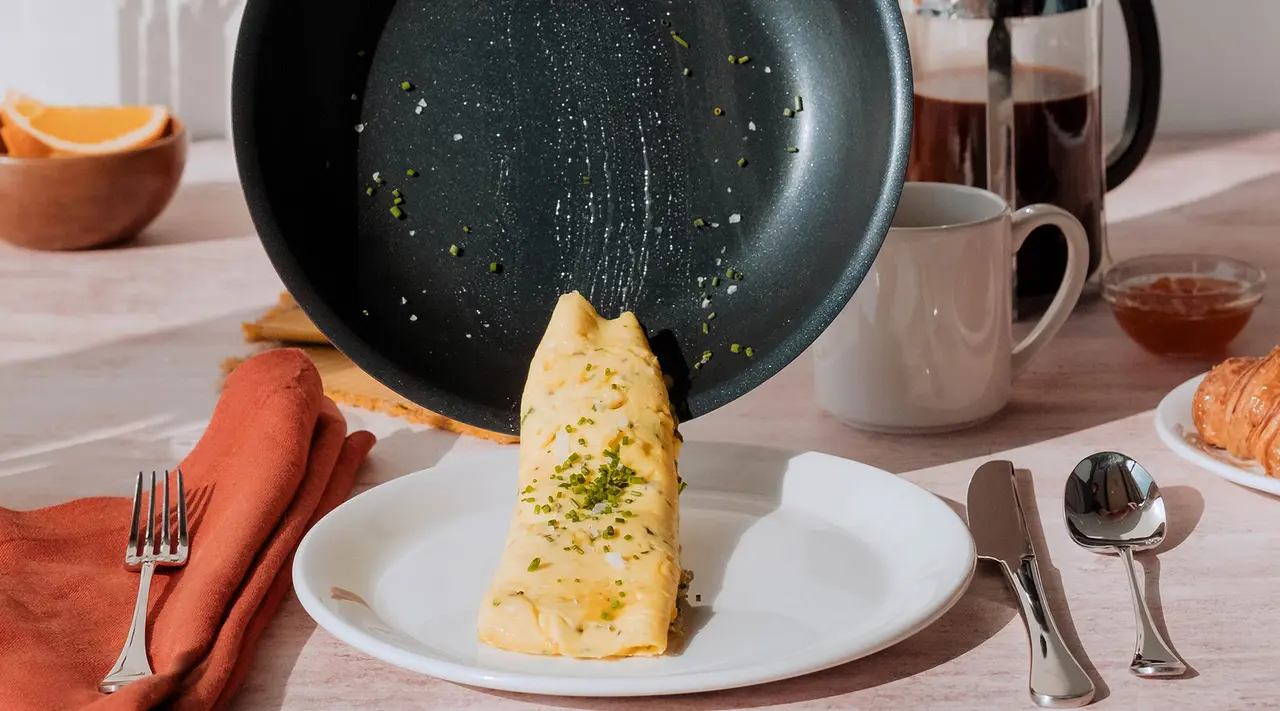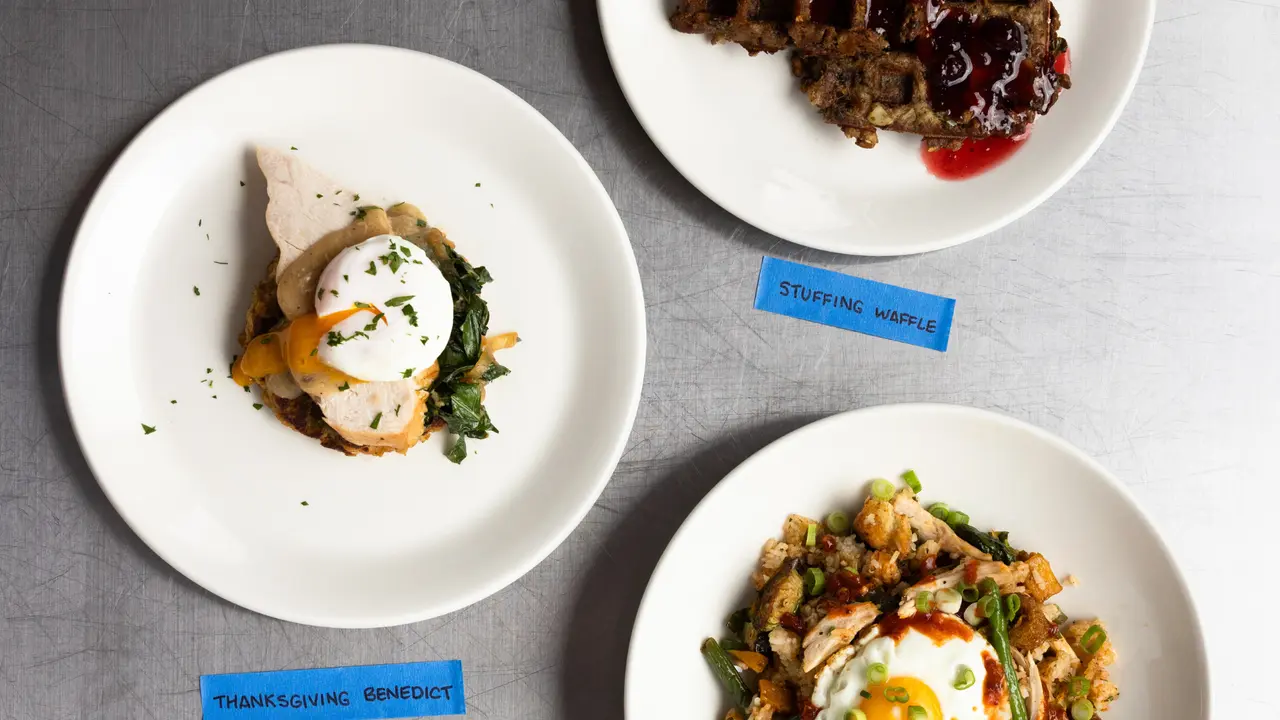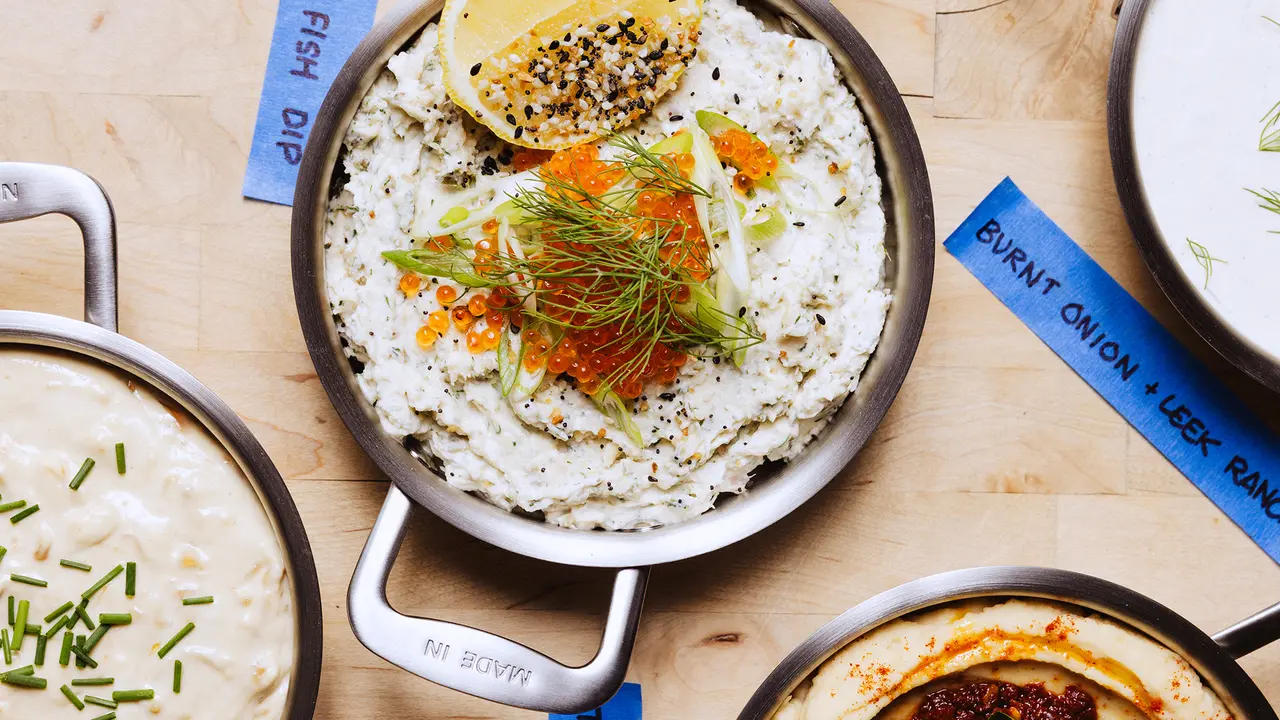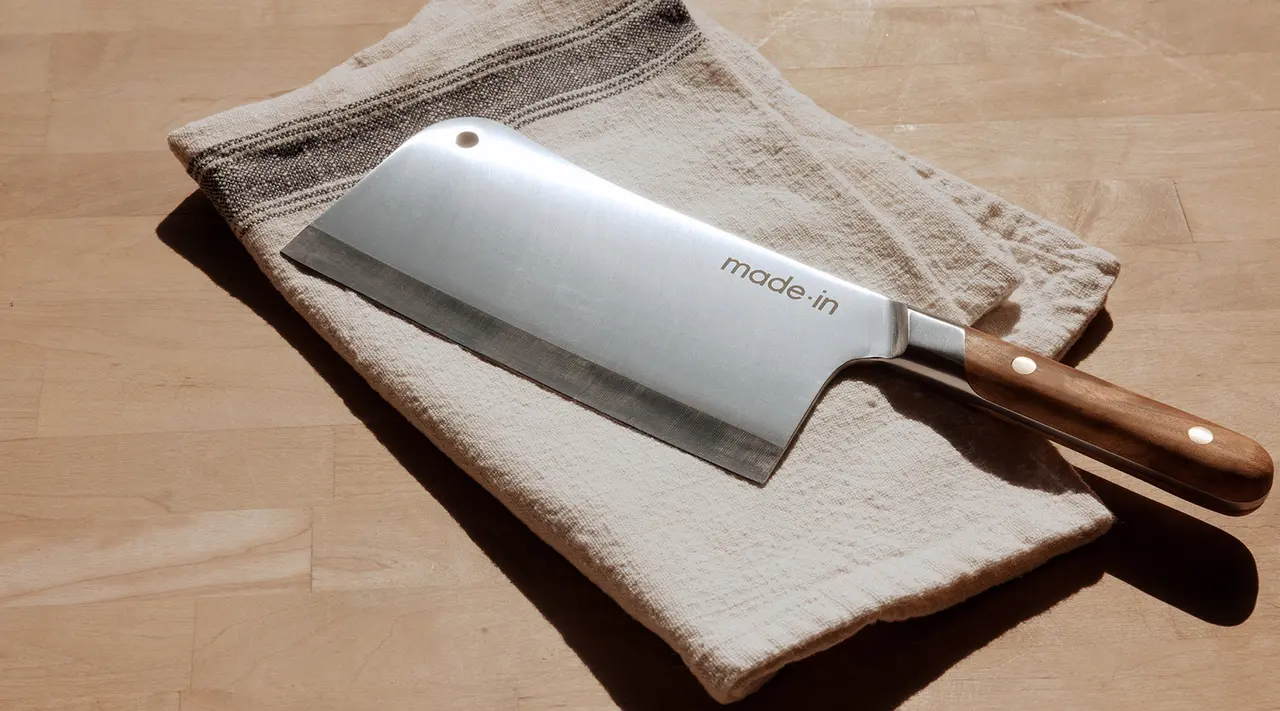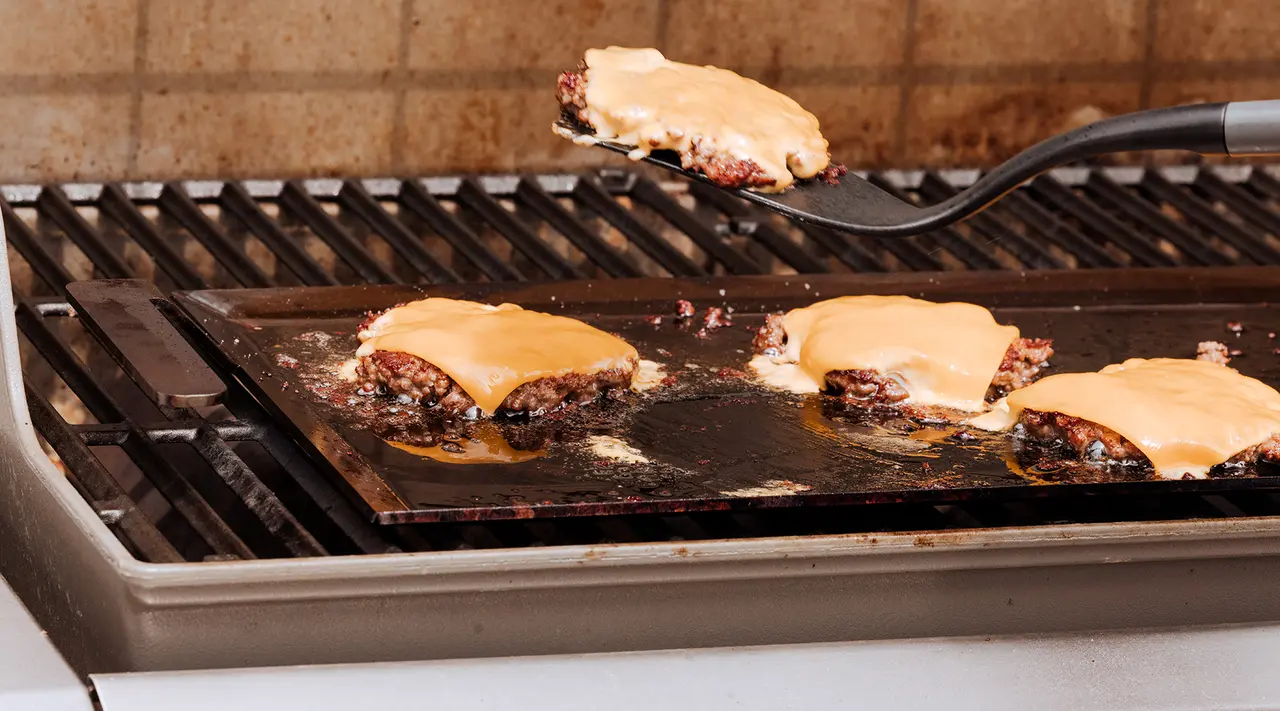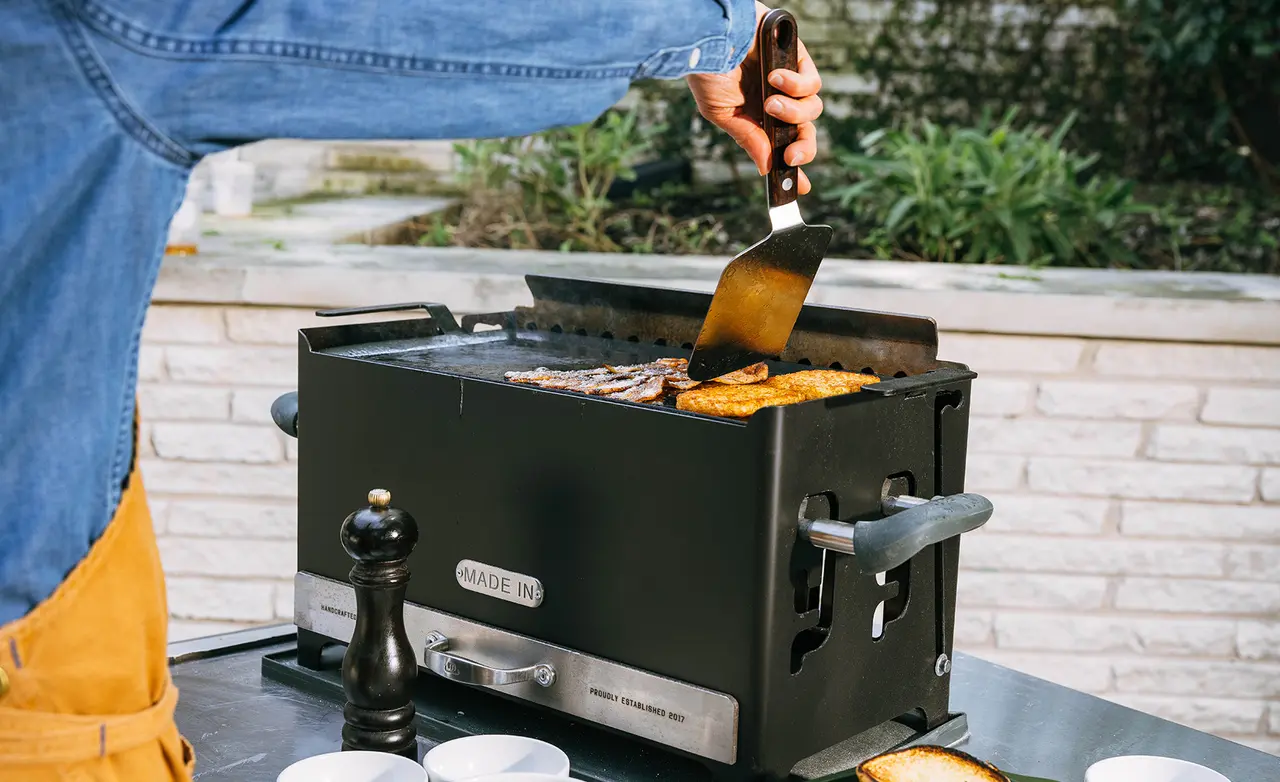For Chef Grant Achatz of Alinea, being able to cook eggs differently and execute on technique is a “badge of honor” for a chef. One of the egg preparations he’s most passionate about is the French omelette. While this dish looks simple, getting it perfect couldn’t be more difficult.
Below, Chef Achatz shares his three tips for perfecting the art of the French omelette at home.
Chef Tip #1: Use the Correct Pan
“A good Non Stick Pan is critical,” Chef Achatz says. “Without a good one, an omelette is impossible.” Eggs are some of the most delicate ingredients, so you want to use a completely no-stick surface. Our Non Stick Pan—used in Alinea—is constructed with a Stainless Clad body for maximum heat control, with two layers of professional non stick coating that will ensure your eggs don't get stuck.
Chef Tip #2: Cook Low and Slow
By using low heat and keeping your egg moving, you can exact more control over your eggs, and practice more control over the end shape and texture of the finished product. “You want to cook it slowly, constantly stirring so you get that curd effect in the middle,” Chef Achatz says.
Chef Tip #3: Look for the Right Texture
Overcooked eggs have a distinctly rubber texture, which is why Chef Achatz prefers his with “a custard-like center.” This means they should be barely set, but not runny. Perfecting this takes practice, but if you follow the two above steps, you should end up with a perfectly cooked omelette every time.
Ready to Cook?
If you're ready to try this technique for yourself, we don't blame you—making a beautiful omelette has never been more approachable. Start with a great Non Stick Pan, and the rest will be much easier.
